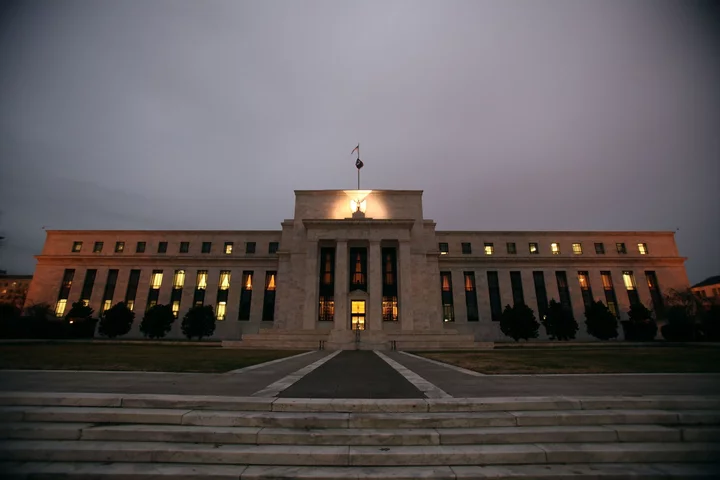Federal Reserve officials at their policy meeting in July largely remained concerned that inflation would fail to recede and that further interest-rate increases would be needed. At the same time, cracks in that consensus were also becoming more apparent.
“Most participants continued to see significant upside risks to inflation, which could require further tightening of monetary policy,” according to minutes of the US central bank’s July 25-26 policy meeting published Wednesday in Washington.
But two Fed officials favored leaving rates unchanged or “could have supported such a proposal,” instead of the rate hike the Federal Open Market Committee ultimately authorized at the conclusion of the meeting, the minutes showed.
“Minutes from the July FOMC meeting frame the emerging tension between inflation data that is moderating faster than the Fed anticipated and growth data that is coming in stronger than the Fed anticipated,” Evercore ISI economists led by Krishna Guha said in a note after the release.
The July rate hike brought the target range for the Fed’s benchmark rate to 5.25% to 5.5%, the highest level in 22 years. That marked a resumption of increases after officials left rates unchanged at the previous gathering for the first time since they began tightening in early 2022.
What Bloomberg Economics Says...
“Though the post-meeting statement and votes showed a united committee, the minutes confirm there’s a dovish contingent and that bond-market bets on a finished rate-hike cycle are likely accurate.”
— Stuart Paul, economist
To read the full note, click here
While quarterly projections last updated in June showed most officials at the time favored two more increases in 2023, Chair Jerome Powell emphasized after the July decision that the Fed would take things meeting by meeting.
“We intend, again, to keep policy restrictive until we’re confident that inflation is coming down sustainably to our 2% target, and we’re prepared to further tighten if that is appropriate,” Powell told reporters on July 26.
Treasury yields rose after the release of the minutes Wednesday, while the S&P 500 index extended its losses and the dollar added to its gains.
Added Color
The record of the July gathering added color around public remarks from officials on the Federal Open Market Committee in recent weeks, which have suggested the strong degree of consensus underpinning the aggressive tightening campaign of the last year and a half may be starting to fray.
Some, such as Philadelphia Fed President Patrick Harker, have indicated the central bank might not need to keep raising interest rates. Others, including Fed Governor Michelle Bowman, have taken the opposite view.
“A number of participants judged that, with the stance of monetary policy in restrictive territory, risks to the achievement of the committee’s goals had become more two-sided, and it was important that the committee’s decisions balance the risk of an inadvertent overtightening of policy against the cost of an insufficient tightening,” the minutes said.
Investors currently do not expect another rate increase this year, according to futures contracts, though the implied odds of a hike at the Oct. 31-Nov. 1 meeting are higher than those for their next meeting on Sept. 19-20. They continue to see the Fed commencing with rate cuts in 2024, with the benchmark seen falling to around 4.25% by the end of next year.
Fed watchers will listen for a possible signal at the Kansas City Fed’s annual Jackson Hole conference in Wyoming next week, where Powell is expected to deliver remarks.
Key economic data published since the July gathering have mostly supported the notion that Fed officials will have some time to deliberate over the need for more tightening.
Quarterly releases on employment costs and unit labor costs showed a deceleration in the pace of increases, while a measure of consumer prices excluding food and energy logged the smallest back-to-back monthly advances in more than two years.
The minutes also conveyed some optimism about the outlook as the Fed’s influential staff economists “no longer judged that the economy would enter a mild recession toward the end of the year.”
Still, they expected economic growth over the next two years “would run below their estimate of potential output growth, leading to a small increase in the unemployment rate relative to its current level.”
--With assistance from Chris Middleton and Liz Capo McCormick.
(Updates with comment from Bloomberg economist in fourth paragraph.)

